
How to Use ESP-WROOM-32-cpu-back: Examples, Pinouts, and Specs
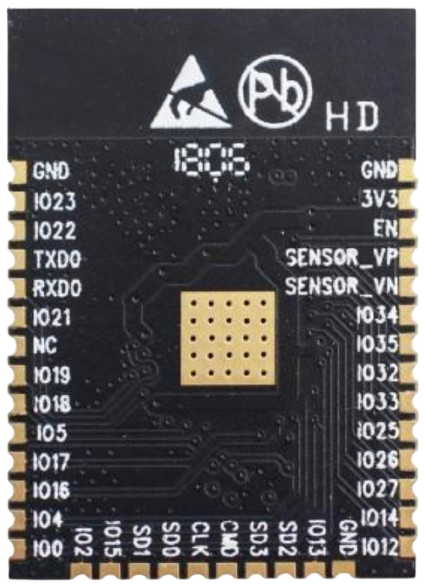
 Design with ESP-WROOM-32-cpu-back in Cirkit Designer
Design with ESP-WROOM-32-cpu-back in Cirkit DesignerIntroduction
The ESP-WROOM-32 is a powerful Wi-Fi and Bluetooth module designed for IoT (Internet of Things) applications. It integrates a dual-core processor, offering robust performance for a wide range of tasks. This module is known for its low power consumption, making it ideal for battery-powered devices. Additionally, it features a variety of GPIO (General Purpose Input/Output) pins, enabling seamless interfacing with sensors, actuators, and other electronic components.
Explore Projects Built with ESP-WROOM-32-cpu-back
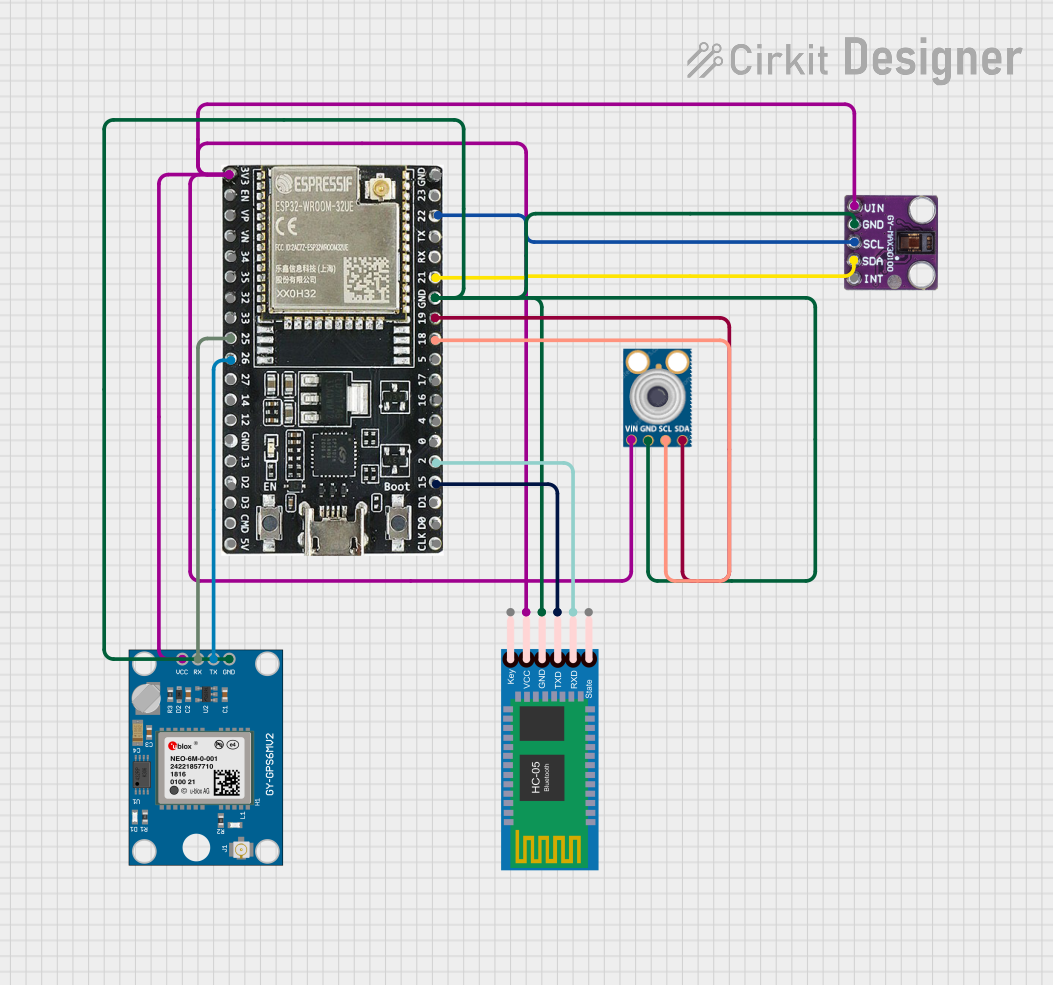
 Open Project in Cirkit Designer
Open Project in Cirkit Designer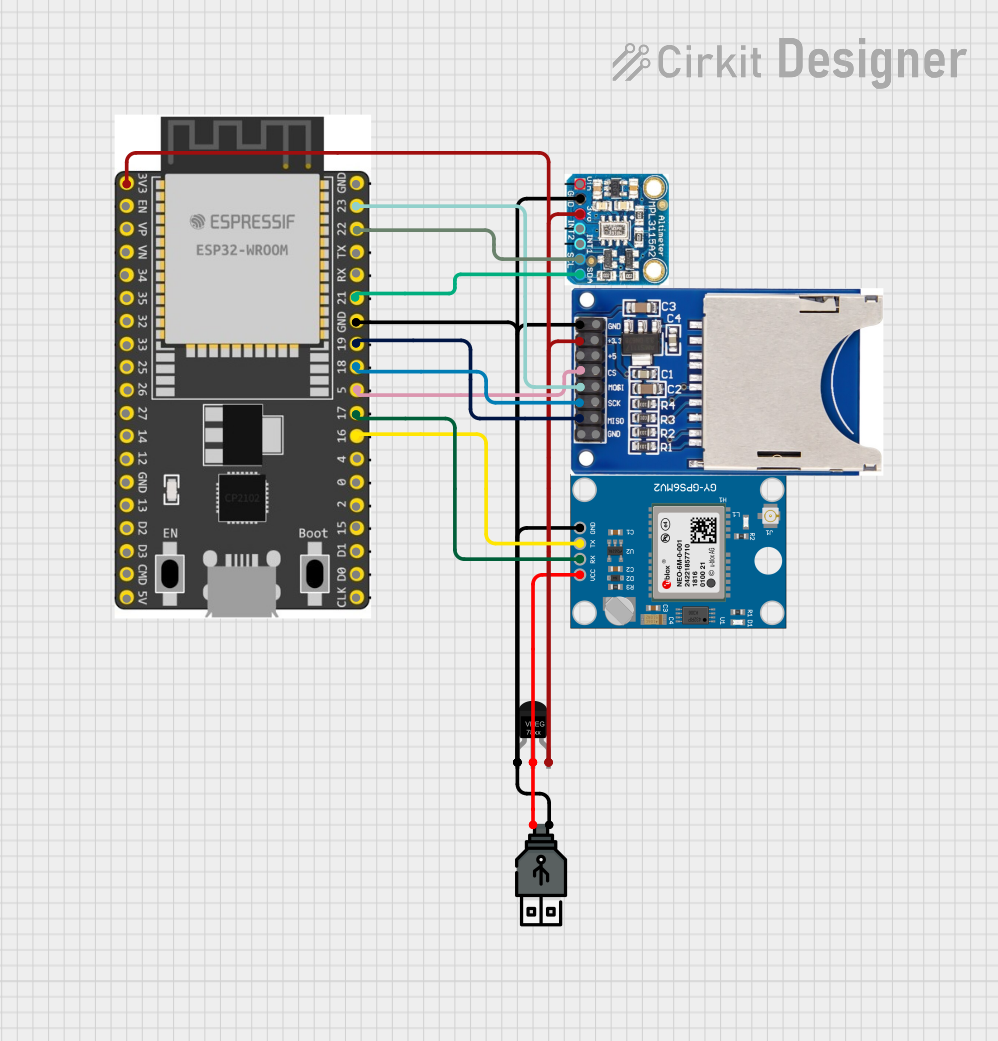
 Open Project in Cirkit Designer
Open Project in Cirkit Designer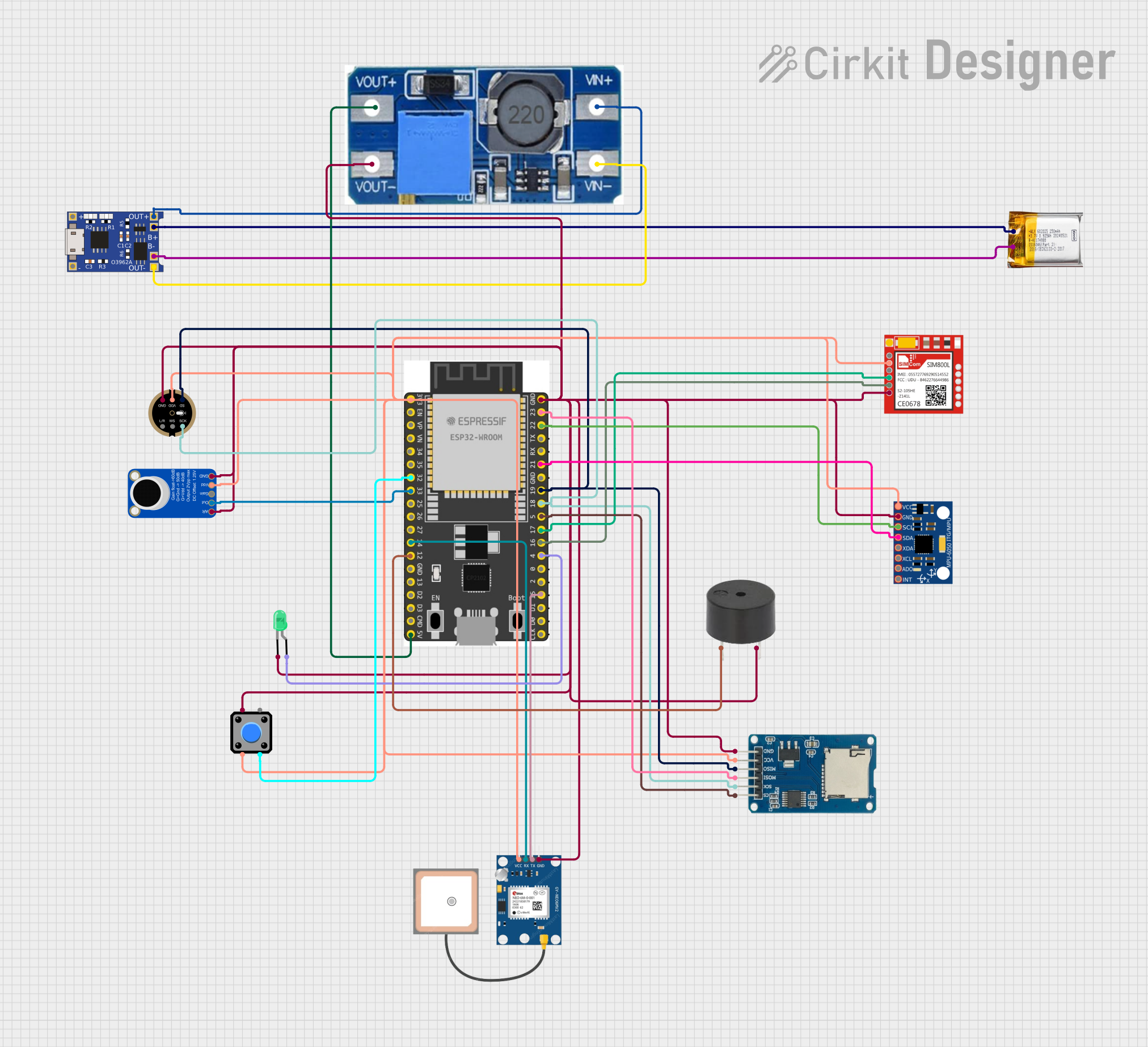
 Open Project in Cirkit Designer
Open Project in Cirkit Designer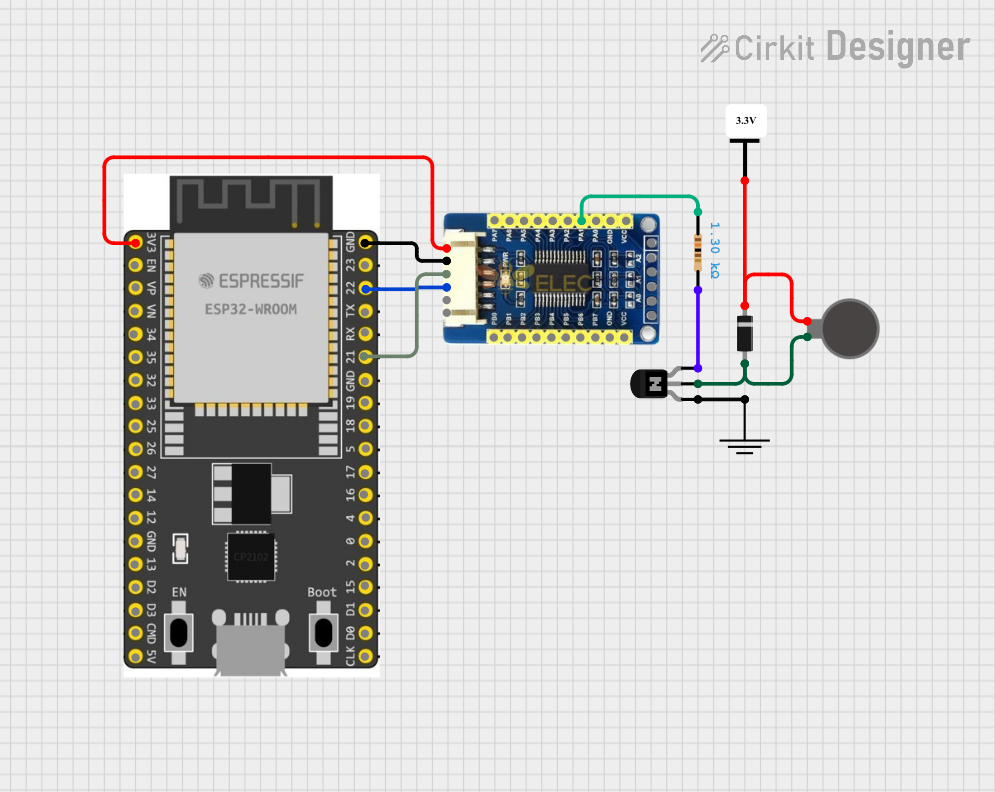
 Open Project in Cirkit Designer
Open Project in Cirkit DesignerExplore Projects Built with ESP-WROOM-32-cpu-back

 Open Project in Cirkit Designer
Open Project in Cirkit Designer
 Open Project in Cirkit Designer
Open Project in Cirkit Designer
 Open Project in Cirkit Designer
Open Project in Cirkit Designer
 Open Project in Cirkit Designer
Open Project in Cirkit DesignerCommon Applications and Use Cases
- Smart home devices (e.g., smart lights, thermostats)
- Wearable technology
- Industrial automation
- Wireless data logging
- IoT prototyping and development
- Remote monitoring and control systems
Technical Specifications
The ESP-WROOM-32 module is packed with features that make it versatile and efficient for various applications. Below are its key technical specifications:
| Parameter | Value |
|---|---|
| Processor | Dual-core Xtensa® 32-bit LX6 microprocessor |
| Clock Speed | Up to 240 MHz |
| Flash Memory | 4 MB (default, expandable in some variants) |
| SRAM | 520 KB |
| Wi-Fi Standards | 802.11 b/g/n (2.4 GHz) |
| Bluetooth | Bluetooth v4.2 BR/EDR and BLE |
| Operating Voltage | 3.0V to 3.6V |
| GPIO Pins | 34 (multipurpose, including ADC, DAC, PWM, I2C, SPI, UART, etc.) |
| ADC Channels | 18 (12-bit resolution) |
| DAC Channels | 2 (8-bit resolution) |
| Power Consumption | Ultra-low power consumption in deep sleep mode (~10 µA) |
| Operating Temperature | -40°C to +85°C |
| Dimensions | 18 mm x 25.5 mm x 3.1 mm |
Pin Configuration and Descriptions
The ESP-WROOM-32 module has 38 pins, but not all are available for general use. Below is a table summarizing the key pins and their functions:
| Pin Number | Pin Name | Function |
|---|---|---|
| 1 | EN | Enable pin. Pull high to enable the module. |
| 2 | IO0 | GPIO0. Used for boot mode selection or general-purpose I/O. |
| 3 | IO2 | GPIO2. General-purpose I/O. |
| 4 | IO4 | GPIO4. General-purpose I/O. |
| 5 | IO5 | GPIO5. General-purpose I/O. |
| 6 | IO12 | GPIO12. Can be used as ADC, PWM, or general-purpose I/O. |
| 7 | IO13 | GPIO13. Can be used as ADC, PWM, or general-purpose I/O. |
| 8 | IO14 | GPIO14. Can be used as ADC, PWM, or general-purpose I/O. |
| 9 | IO15 | GPIO15. Can be used as ADC, PWM, or general-purpose I/O. |
| 10 | IO16 | GPIO16. General-purpose I/O. |
| 11 | IO17 | GPIO17. General-purpose I/O. |
| 12 | GND | Ground. Connect to the ground of the power supply. |
| 13 | 3V3 | 3.3V power input. |
| 14 | TXD0 | UART0 Transmit pin. |
| 15 | RXD0 | UART0 Receive pin. |
Note: Some GPIO pins have specific bootstrapping functions and should not be pulled high or low during boot. Refer to the ESP32 datasheet for detailed pin behavior.
Usage Instructions
How to Use the ESP-WROOM-32 in a Circuit
- Power Supply: Provide a stable 3.3V power supply to the
3V3pin. Ensure the ground (GND) is connected to the circuit's ground. - Programming: Use a USB-to-serial adapter to connect the module to your computer. Connect the
TXD0andRXD0pins to the adapter's RX and TX pins, respectively. - Boot Mode: To upload code, pull the
IO0pin low and reset the module by toggling theENpin. - GPIO Usage: Connect sensors, actuators, or other peripherals to the GPIO pins. Configure the pins in your code as input or output as needed.
Important Considerations and Best Practices
- Voltage Levels: The ESP-WROOM-32 operates at 3.3V logic levels. Avoid connecting 5V signals directly to its pins.
- Deep Sleep Mode: Use deep sleep mode to conserve power in battery-powered applications.
- Antenna Placement: Ensure the onboard antenna has sufficient clearance from metal objects to avoid signal interference.
- Heat Management: The module may heat up during operation. Ensure proper ventilation in your design.
Example Code for Arduino UNO
The ESP-WROOM-32 can be programmed using the Arduino IDE. Below is an example of how to connect the module to a Wi-Fi network:
#include <WiFi.h> // Include the WiFi library for ESP32
const char* ssid = "Your_SSID"; // Replace with your Wi-Fi network name
const char* password = "Your_Password"; // Replace with your Wi-Fi password
void setup() {
Serial.begin(115200); // Initialize serial communication at 115200 baud
delay(1000); // Wait for a second to stabilize
Serial.println("Connecting to Wi-Fi...");
WiFi.begin(ssid, password); // Start connecting to the Wi-Fi network
while (WiFi.status() != WL_CONNECTED) {
delay(500); // Wait for connection
Serial.print(".");
}
Serial.println("\nConnected to Wi-Fi!");
Serial.print("IP Address: ");
Serial.println(WiFi.localIP()); // Print the assigned IP address
}
void loop() {
// Add your main code here
}
Note: Ensure you have installed the ESP32 board package in the Arduino IDE before uploading the code.
Troubleshooting and FAQs
Common Issues and Solutions
Module Not Responding
- Cause: Incorrect wiring or insufficient power supply.
- Solution: Double-check the connections and ensure the power supply provides at least 500 mA.
Wi-Fi Connection Fails
- Cause: Incorrect SSID or password.
- Solution: Verify the credentials and ensure the Wi-Fi network is within range.
Code Upload Fails
- Cause: Incorrect boot mode or serial port settings.
- Solution: Pull the
IO0pin low during upload and ensure the correct COM port is selected in the IDE.
GPIO Pin Not Working
- Cause: Pin conflict or incorrect configuration.
- Solution: Check if the pin is used for bootstrapping or other internal functions. Use a different GPIO pin if necessary.
FAQs
Q: Can the ESP-WROOM-32 operate on 5V?
A: No, the module operates at 3.3V. Use a level shifter if interfacing with 5V devices.Q: How do I reset the module?
A: Toggle theENpin to reset the module.Q: Can I use the ESP-WROOM-32 for Bluetooth communication?
A: Yes, the module supports Bluetooth v4.2, including BLE (Bluetooth Low Energy).Q: What is the maximum range of the Wi-Fi?
A: The range depends on the environment but typically extends up to 100 meters in open space.
This documentation provides a comprehensive guide to using the ESP-WROOM-32 module effectively. For further details, refer to the official datasheet and technical reference manual.